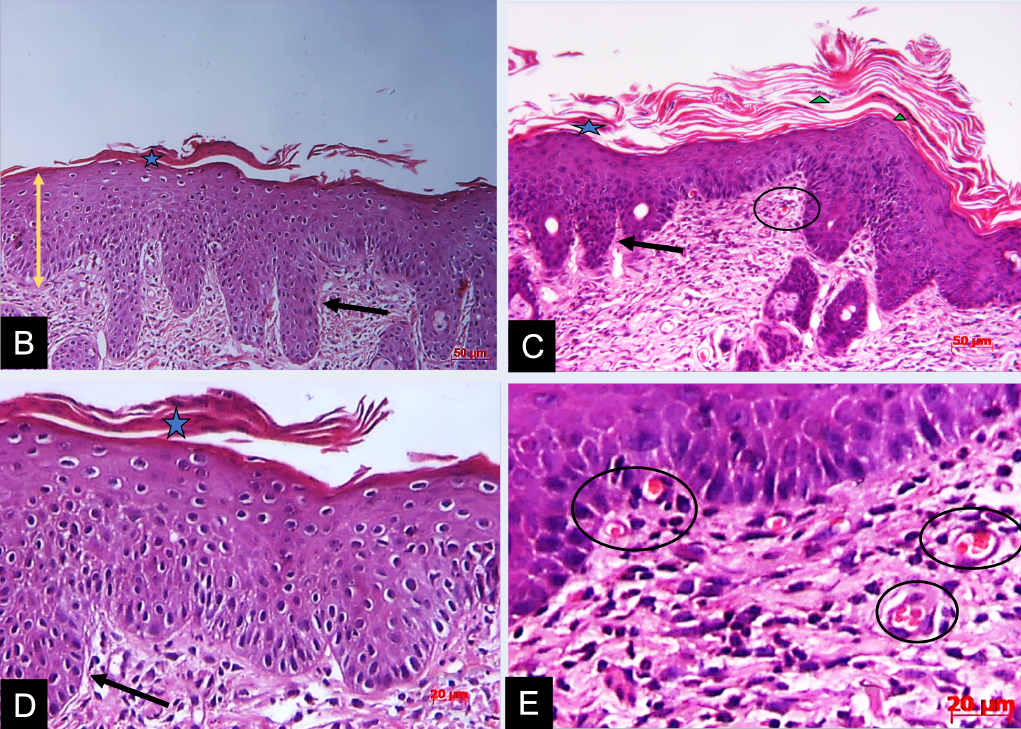Effects of Imiquimod Application Durations on Psoriasis-like Lesions and Cytokine Expression in Mice
DOI:
https://doi.org/10.15419/bmrat.v11i5.885Keywords:
IL-17/IL-23 pathway, imiquimod, inflammatory skin disorders, psoriasis, preclinical models, psoriasis researchAbstract
Introduction: Psoriasis is a chronic inflammatory skin disorder with a complex pathogenesis, prominently involving the IL-17/IL-23 pathway. The imiquimod (IMQ)-induced mouse model is widely utilized for preclinical psoriasis research. This study aims to elucidate the effects of different durations of IMQ exposure on the development and characteristics of psoriasis-like lesions and the underlying changes of related cytokines in mice.
Methods: Balb/c mice were topically administered IMQ on their shaved dorsal skin for either six or twelve consecutive days to induce psoriasislike lesions, with untreated mice serving as controls. Clinical symptoms were assessed, and the expression levels of IL-17A and IL-23 were quantified using RT-PCR and immunohistochemistry. Histopathological changes were evaluated through H&E staining.
Results: Mice exposed to IMQ displayed significant psoriasis-like lesions, with peak severity observed on day six across both exposure groups. Long-term exposure (12 days) did not aggravate the severity of lesions but affected the dynamics of cytokine expression and histopathological features. Notably, IL-17A and IL-23 levels correlated with the progression and severity of lesions in the short-term exposure group, decreasing significantly after the cessation of IMQ application.
Conclusion: Short-term IMQ exposure (six days) effectively induces psoriasis-like lesions in mice, highlighting the pivotal role of the IL-17/IL- 23 axis in this model. Extended exposure to IMQ (twelve days) offers no additional benefit in terms of lesion severity, suggesting that a six-day protocol is optimal for establishing a mouse model of psoriasis for the evaluation of therapeutic interventions targeting the IL-17/IL-23 pathway.

Published
Issue
Section
License
Copyright The Author(s) 2017. This article is published with open access by BioMedPress. This article is distributed under the terms of the Creative Commons Attribution License (CC-BY 4.0) which permits any use, distribution, and reproduction in any medium, provided the original author(s) and the source are credited.
